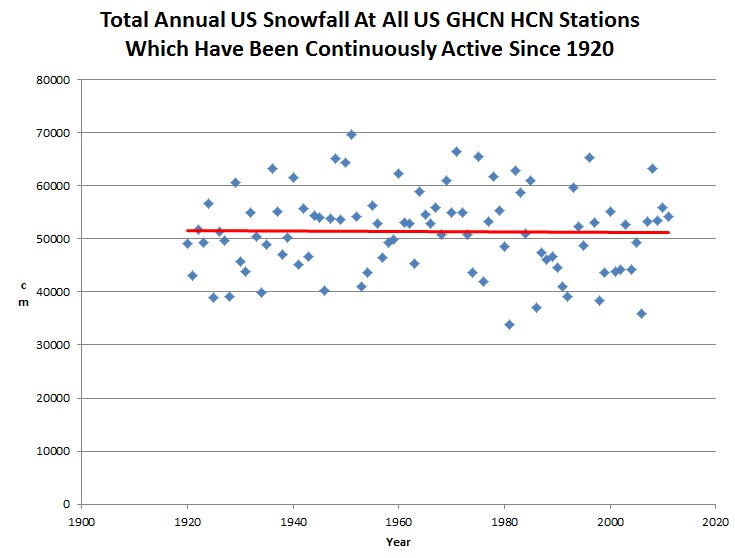I added some code to measure the total snowfall. The graph below plots the total annual snowfall for all 821 GHCN HCN stations which have been continuously active since at least 1920.
There is no trend in US snowfall. The snowiest year was 1951, and the least snowy year was 1981.



We actually have had an unusually consistent climate. Historically it will have to change sooner or later.
I remember when helicopters brought us food in 1951. The folks contacted the neighbors, (about eight) and got the food orders, I thought it was great fun.
As the temperature warms the air holds more moisture – I am sure you heard that one, right? But is it true – do you agree that warm air holds more moisture?
[oh there I go again, asking those “leading questions”…sorry]
And thus, we get MORE snow as it warms, at least where temperatures still fall to freezing in the atmosphere at around 1000 feet off the ground [not the same as “above sea level” by the way].
Some evidence of that is that here in Canada, the months with the MOST snow are in spring, and not in the coldest Jan/Feb part of the winter… because warmer air holds more moisture and therefore bigger snowfalls.
The annual average snowfall can DOUBLE in the month of March here in Southern Canada.
EH!!
The vapor pressure of water hasn’t changed. Snow forms when a cold air mass collides with moist air. Stop listening to crap. Cold winters are snowy winters.
The IPCC predicted less snowfall not more. What you’re asserting is that if it snows more AGW theory is correct but if it snows less AGW theory is correct.